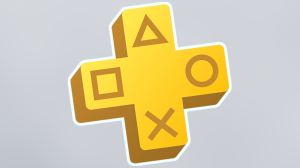
Miitopia is the game I once had a dream about sometime in 2007. After sinking hours upon hours into games like Wii Sports, Wii Play and Mario Party 8, all I really wanted was to take my Mii, Nintendo‘s ever-flagship avatar characters, and Miis of my friends and toss them into a sprawling fantasy world, complete with wacky costumes, silly lore and a story that feels like Mad Libs meets Final Fantasy.
Videos by ComicBook.com
But it’s been 10 years since then, and the idea of a game centered around Miis has long lost its mainstream appeal. Games like Super Smash Bros. and Tomodachi Life used Miis to great lengths, but nothing really set the world on fire. Let me be clear up front, Miitopia is a great game. It’s packed with each and every thing I could have wanted from a Mii-centric game, but is it too late?
Once upon a time…
It doesn’t get much simpler than the premise of Miitopia’s story. You play as a lone wanderer who comes across a town soon-to-be ravaged by the Dark Lord, the game’s main antagonist, who steals the faces of his victims and places them on creatures and bosses you’ll fight throughout the game. Those faces? Miis you select to populate your world.
Miitopia lets you import Miis in basically every way you could think. If you have them saved to your system, great! If not, you can add them via Miitomo, QR codes and the in-game Mii Maker. The game will also pull in Miis from the ether if you don’t want to take the time for the other options. This led to my “Dark Lord” being cast as an Angry Bird. I’m guessing it’s the red one, since its name is literally just ‘Angry Bird.’

The game begins when you set off on a quest to return faces to the townspeople, and the process is rinsed and repeated with simple plot changes throughout the game. First it’s the townspeople, then it’s the king, then it’s the princess, etc. The game is formulaic in this way, but the charm outweighs the cliche, and the game shakes things up enough that you’ll feel more than accomplished by its end.
You’ll quickly cast your traveling party, which in my game consisted of two close friends and Waluigi. You’ll assign each playable Mii a job, like any traditional RPG. My main character was a warrior, my friends a cleric and thief respectively, and Waluigi was our team’s chef. Your team will reset a couple of times throughout the game, and you’ll end up re-selecting those Miis. Each Mii’s job has it’s own strengths and buffs, whether its healing or dealing damage.
This is also compounded by the game’s system of relationships and personalities. For example, I made Waluigi stubborn, so sometimes he’ll turn away food or healing items, but that’ll lead to an increased chance of critical hits or second turns. Your characters will also chatter with each other throughout the game, assist each other via in-battle team-up moves and room together when you stop at inns. As those relationships between characters strengthen and level up, additional skills and perks come as well.
For all intents and purposes, the game has a deep and layered progression system. But the genius behind it all? You can ignore most of it and be just fine. The game’s learning curve is simple, it’s gameplay is bite-sized and addicting, and its lore and world building is charming and self-made.
Gameplay
Much of my time spent with Miitopia was in two or three-hour bursts of time. The game is broken up into dungeons, which consist of your characters moseying form left to right on-screen, on rails and coming across random encounters, treasure chests, bosses and inns.

The combat itself, as mentioned above, is layered. For small battles, you can turn “auto battle” on and sit back. You’ll collect experience and gold, but you won’t have to mash any buttons and waste time. When you are active, though, you’ll want to be aware of the aforementioned character relationships, as well as two in-battle mechanics: Safe Spots and Sprinkles.
Safe Spots are Miitopia‘s answer to healing yourself from status effects. If one of your characters ends up crying or laughing, two of the game’s status debuffs, you toss them into the Safe Spot for a couple of turns and it brings them back to normal. You can also use it when you’re low on health items and want to regain your standing — the spot will heal between turns as well.
Sprinkles are also a welcome addition, and will allow newcomers to traditional RPGs a chance to ease into more difficult gameplay. Different shakers have different effects. One will add bits of health or MP to your characters, another will give you a single revive during battle. It may seem like another handholding addition — and it totally is — but it’s something you can ignore if you’re looking to play with the stakes a bit higher.
Verdict
Overall, Miitopia is a simple and addicting joy to play through. Its cast of characters are wacky and endearing, but the added ability to cast your friends, family, celebrities and more makes it that much more enticing. It’s by no means a revolutionary RPG, but it’s a fun distraction from the summer slump, and a great way to bridge the gap before fall’s 3DS juggernauts, Metroid and Pokemon.
RATING: Four out of five stars.








